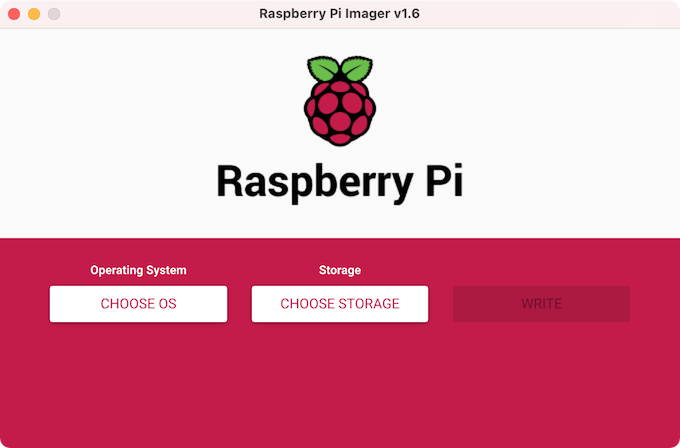Orange Pi 3 LTS vs Raspberry Pi (Klipper)
Disclaimer
This is not at all meant to serve as a "which is better?" or "which is faster?" article.
The intention of this article is to explain the difference and what it means within a limited use scope, in this case powering a 3D printer more specifically a 3D printer with Klipper firmware.
While there is several Raspberry "alternative" options the focus of this article is to cover generally available options (within North America at least) with on-board WIFI.
Lets start by comparing specs we care about
Orange Pi 3 LTS | Raspberry Pi B 3 | Raspberry Pi B 3+ | Raspberry Pi Zero 2 W | Raspberry Pi 4 |
| CPU: 4 cores / 1.8Ghz Memory: 2GB DDR3 Storage: 8GB Internal + MircoSD slot | CPU: 4 cores / 1.2Ghz Memory: 1GB DDR2 Storage: MicroSD slot | CPU: 4 cores / 1.4Ghz Memory: 1GB DDR2 Storage: MicroSD slot | CPU: 4 cores / 1Ghz Memory: 512MB Storage: MicroSD slot | CPU: 4 cores / 1.5 to 1.8Ghz |
The common misconception is that the Raspberry Pi B4 is the best pick for running Klipper on the average 3D Printer.
If all you are considering is the Klipper firmware with WebUI (Fluidd/Mainsail) and maybe a basic screen or LCD touch screen.
The Raspberry Pi Zero 2 W is more than powerful enough for our needs.
If you want to run a camera as well then you will need more processing power.
So you should consider the Raspberry Pi B 3 or faster.. basically on this chart anything besides the zero will be more than significantly sufficient.
Anyone telling you that you have to use a Raspberry Pi 4 is like saying you need the latest Intel or AMD top end computer to watch YouTube.
Sure, it would work great.. but you REALLY don't need it. Save your money and buy other upgrades for your 3D Printer or more filament!
Why (any) Raspberry Pi is better
There is countless guides and examples for using a Raspberry Pi. There is also countless STLs available for enclosing and/or mounting brackets for Raspberry Pi's.
But the single main advantage of using a Raspberry Pi is the Raspberry Pi Imager.

With the Raspberry Pi Imager you can easily pick a basic Operating System (Raspbian) setup your User Login and password, Set your local time zone and region as well as pre-configure the Raspberry Pi to connect to your WIFI network with only a few clicks and zero knowledge of a Linux SSH terminal.
Additionally, there is even pre-configured operating system options with Klipper pre-loaded!
Personally my pick is a Raspberry Pi B3 or B3+ which ever is easier to get at the time and fits my budge. For the use case (Klipper) the difference between models means nothing for me and the Pi 4 just costs too much with no real gains for the use case.
Why (any) Raspberry Pi is worse
While the reasons are honestly few.. they do greatly impact many people.
- Availability - since 2020 (its currently 2023 at time of writing) has been scarce. Buying a Raspberry Pi of any model is usually hard as most places are always out of stock or backordered. When there is stock it sales out almost instantly.
- Price - Raspberry Pi brand comes with a premium so generally the MSRP is higher on most models vs Alternative PI's. But also due to the low supply and high demand. Raspberry Pi's often go for as high as 5x MSRP price. Making them a significant investment for many people.
Why Orange Pi 3 LTS is better
Its usually cheaper and offers better compute performance (faster CPU, more RAM) for the cost. But an additional twist, high speed internal storage! This means you don't have to use a MicroSD card for running the Pi device and the Internal Storage has faster read and write than the average MicroSD card. While this isn't really significant for day to day use, it does mean that installing system and firmware updates is considerably faster on average. Boot times are also a bit faster if you usually only turn on your 3D printer when you want to print and keep it powered off when not in use.
Why Orange Pi 3 LTS is worse
Cant talk about how good the Orange Pi 3 LTS is without the Bad.
Because the brand is not as well known and because the manufacture does not put as much effort in to documentation or software development. The Orange Pi product family overall can be some what intimidating to the new or average user. You have to generally be following guides to understand how to configure the device or be a proficient Linux user.
What about Input Shaper (GPIO pins)?
The most common reason to use Klipper firmware on a 3D Printer is to take advantage of its powerful Input Shaper. Which allows you to print at higher speeds and better quality than the typical 3D printer running Marlin Firmware.
Typically you would connect an accelerometer to your Raspberry Pi via the many GPIO pins available on the device. Unfortunately the Orange Pi GPIO pin arrangement is a bit different and there is less guides of people telling you how to use them.
However, there is many Accelerometers now available with built-in USB which is much more plug and play friendly and more recommended for the average person.
As the Accelerometer does not need to be connected at all times, it is less practical to hardwire it to the GPIO pins. As I usually use a USB based accelerometer, the GPIO pin configuration has no impact on my use case because I don't use them.